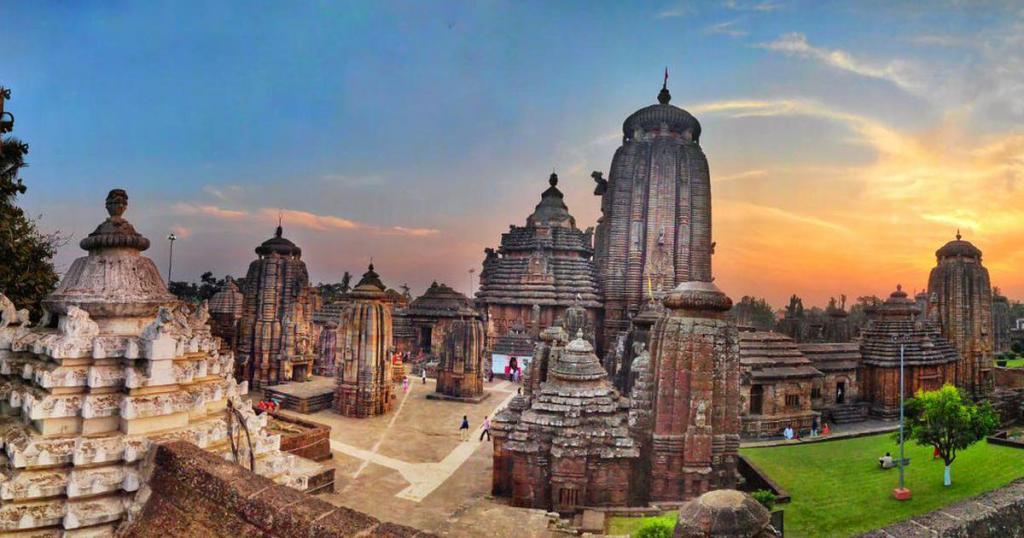Lingaraj Temple
Why in News:
- The Bhubaneswar Municipal Corporation has restricted public entry into the 11th century Lingaraj Temple after priests tested positive for the novel coronavirus.
About the temple

- Lingaraja Temple is a Hindu temple dedicated to Shiva and is one of the oldest temples in Bhubaneswar(Odisha).
- The temple speaks to the core of the Kalinga Architecture and is raised in red sandstone.
- The Lingaraja temple is said to have been fabricated first by the ruler Yayati Kesari (Somavamsi dynasty) and continued by kings from the Somavamsi dynasty, with later additions from the Ganga rulers.
- It is built in the Deula style that has four components namely, vimana (structure containing the sanctum), jagamohana (assembly hall), nata mandira (festival hall) and bhoga-mandapa (hall of offerings), each increasing in the height to its predecessor.
- In the sanctum sanctorum, the linga of Lord Shiva is regarded as ‘Swayambhu’ (self-originated) and worshipped as both Lord Shiva and Lord Vishnu.
- The amicability of the two factions is found in this temple where the god is adored as Harihara, a consolidated type of Vishnu and Shiva.
- The temple has images of Vishnu, possibly because of the rising prominence of Jagannath sect emanating from the Ganga rulers who built the Jagannath Temple in Puri in the 12th century.
Kalinga School of Temple Architecture
- Kalinga style is identified as a subclass under the Nagara category.
- Hindu temple architecture is broadly categorized into three categories, Nagara, Dravida and Vesara. This classification is mainly based upon the geographical division, i.e. Nagara style is predominantly of northern India while Dravidian is confined to the southern part of India and Vesara in the middle region.
- There are three kinds of Kalinga temple styles i.e. Rekha, Khakhara and Bhadra.
- Rekha-deul (temple) is distinguished with its square plan topped with a curvilinear tower.
- A Pidha-deul, also referred as Bhadra deul, also has a square plan topped with a pyramidal tower composed of horizontal tiers arranged in a receding manner.
- A Khakhara deul is surmounted with a barrel-shaped (vault-shape) tower over a rectangular plan.
- Silpaprakasha is the most famous text describing the Odishan temple architecture which was authored by Ramachandra Kaulachara who belonged to the reign of king Viravarman.
- A typical Kalinga (Odishan) temple consists of two parts, a sanctuary where an idol or linga is placed and a hall where pilgrims can view the lord installed in the sanctuary.
- The sanctuary is referred to as deul while the hall is known as jagamohana. The other components under Kalinga style temple are:
- Pitha is the platform over which the entire structure of the temple stands.
- Bada is the vertical wall over which tower is supported.
- Gandi is the lower part of the tower while mastaka is the upper part of the tower.
Reference:
Subscribe
Login
0 Comments
